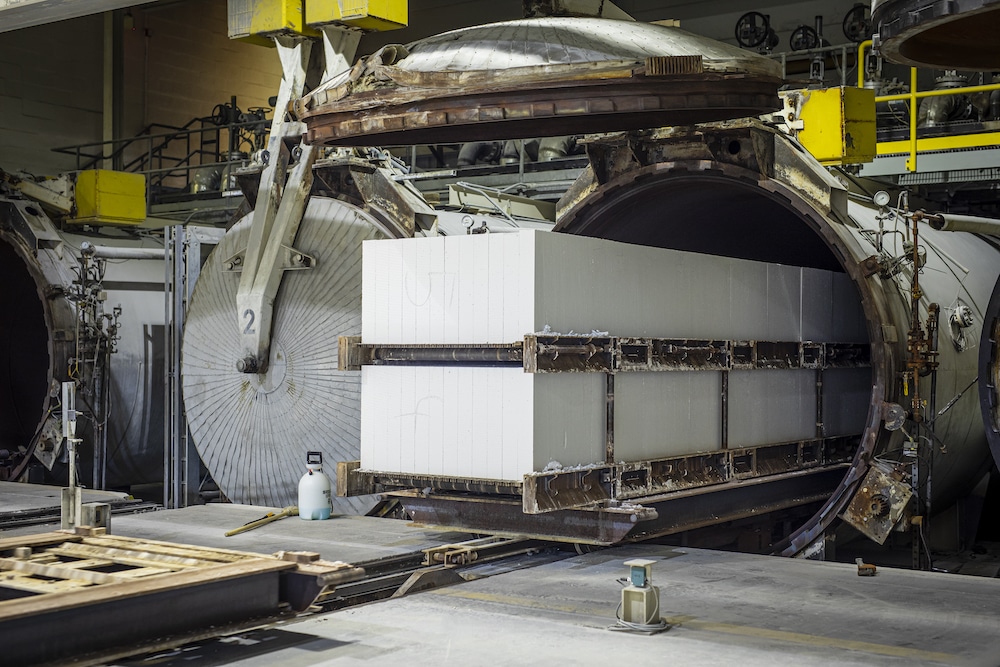Environmentally Friendly Product
AERCON AAC has a minimal carbon footprint, is created from renewable materials, and is ecologically beneficial. It’s a great “green” option for architects and engineers who want to lessen their environmental impact and encourage sustainability in their construction projects.
AERCON AAC is made from natural raw materials, which makes it a sustainable and renewable resource.
Cement, lime, water, and a rising agent are the primary ingredients to make AERCON AAC. Because the raw materials are plentiful and easy to get, the manufacturing process is more sustainable.
These raw materials are processed to provide a building material with a large number of air pores – aerated concrete. Due to our unique hydration process, the batched mixture of raw materials “rises”. Thus, one unit of volume of raw materials will yield five units of volume of AERCON AAC.
During the production process, no toxic or environmentally hazardous by-products are emitted. The trimmings are returned to the initial mixture during the trimming process, eliminating the loss of raw materials. Energy is also saved in the curing process, where the hot steam used in the autoclaves is reclaimed for reuse. This technically advanced process conserves precious energy resources. The steam curing production method helps conserve energy since steam curing is carried out at relatively low temperatures, and thermal energy is recovered for maximum efficiency.
An Energy-Conserving Way to Build
AERCON Autoclaved Aerated Concrete (AAC) products’ lightweight properties are also very favorable for the environment.
Energy consumption and costs for delivering AERCON AAC products to the project site are reduced due to their lightweight. The manpower and equipment required to install AERCON AAC building systems can be efficiently utilized in all construction phases. The ease with which the material is cut, shaped, and placed allows easy fit-up with less physical energy consumed and fewer fuel-driven machines required.
AERCON AAC’s high-insulating properties surpass most other building products and provide ongoing energy savings for the building owner by increasing the building’s thermal efficiency. Since using this material can also allow the owner to take advantage of “off-peak” energy use, the owner can see additional savings, and reduced demand for “on-peak” energy can be achieved for the power company.



